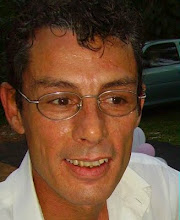
More than a community, Maclovio Rojas is a women-led social movement that works for economic and political autonomy to address issues of health, education, housing, nutrition, and security. Near Tijuana, Baja California, the autonomous community of Maclovio Rojoas demonstrates what is possible for urban place-based political movements. Michelle Tellez. Border Women and the Community of Maclovio Rojas tells the story of the community’s struggle to carve out space for survival and thriving in the shadows of the U.S.-Mexico geopolitical border. NPR’s Martin Kaste contributed to this story from Fort Myers.In collaboration with Social Transformation Lab (ASU), please join PIB for a conversation with Dr. “This is just stuff, I can get it back,” she says. Looking around the destruction that was her life, she seems resigned. “They really did help me out” after Sandy, she says. Since Ian, she’s already filed with the Federal Emergency Management Agency, or FEMA. She lost almost everything in that storm too, she says. “Every single thing we own is gone.”Ĭomstock was living on the Jersey Shore during Hurricane Sandy in 2012.
Public radio international music torre torrent#
“From what I see on Facebook and Instagram and then us coming to here, I think it’s been great.” One woman’s tale of two stormsĪbout a mile west, in the Dean Park Historic District, Lindsay Comstock’s rental house nearly backs up to the Caloosahatchee River, which Ian caused to overflow its banks, sending a torrent of water through the one-story home.Īs the storm closed in, she evacuated to nearby Naples, “but they got hit just as bad, and I lost my truck there.”Īs she’s pulling soaked rugs and clothing from the house, her boyfriend telephones. “I’m getting what I need, and I think other people are getting what they need too,” he says. Outside nearby Dunbar High School, which is being used as a temporary shelter, Sheddrick Jacobs and his wife Sheneka wait for a bus to take them to the centralized shelter, with power and water, at the Hertz Arena in Estero. She’s optimistic that “if we get lights on in the next day or two, we’ll save our food.” McCoy, who is 85, says she’s been getting bottled water from a nearby relief center. The roof on the back side of her house heaved up and down in the fierce winds, causing the drywall ceiling to give way and collapse. McCoy and her friend, Jesse Howard, stayed at home as Ian approached. She’s seen a lot of hurricanes come through here in the last five decades. “You can’t hide from God”Įarline McCoy has lived next door since 1969. In the storm-affected area in an around the city on Sunday, an estimated 580,000 people were still without electricity and boil water notices had been issued for 120 areas in 22 counties. “I haven’t seen one police come to check on the community where we live,” she adds. She says she’s had “no water, no ice, no nothing,” since Tuesday. His air-conditioning unit was ripped away, leaving a gaping hole in the side of his house.Ĭherry’s mother, Chanel, who lives a few blocks away in low-income housing, underwent a kidney transplant in May.

“We are the ones who need the most help,” Grant says.Ī large piece of twisted aluminum siding, apparently blown in from across the street, lies in a crumpled heap on Grant’s front yard. Whenever a disaster happens, for some reason the city is slow to respond to people in ethnic communities, in low-income communities.” “But this is a common thing that I’m seeing in cities around America. “I understand that the city is trying its best to restore everybody’s power,” he says. Authorities accused of slow response in Black communitiesĬherry’s uncle, Ta’Wan Grant, detects a pattern in their plight.

When people here call the power and water authorities, they get only vague assurances. A faint smell of sewage wafts up from the street. Water comes out of the faucet, but it’s little more than a thin brownish stream, unsafe to drink. “They’re saying the islands got destroyed,” observes 24-year-old Lexxus Cherry. Unlike the affluent seaside communities of Sanibel Island and Fort Myers Beach, where the media has descended to chronicle every detail of the aftermath of Hurricane Ian, the people who live in the squat homes in Dunbar have faced the crisis mostly on their own.Īnd for many in the historically African-American neighborhood, there’s a sense of anger and frustration.


 0 kommentar(er)
0 kommentar(er)
